Northern Thai cuisine is renowned for its bold flavors, aromatic herbs, and unique cooking techniques. Influenced by the region's mountainous terrain and ethnic diversity, it features a diverse array of dishes. Staple ingredients include sticky rice, herbs like lemongrass and galangal, and fiery chili peppers. Signature dishes such as khao soi (curry noodle soup) and gaeng hanglay (pork curry) showcase the region's rich culinary heritage. Northern Thai cuisine balances spicy, sour, salty, and sweet flavors, creating a harmonious culinary experience. It reflects the ingenuity of local cooks who have adapted traditional recipes to suit the region's climate and available ingredients.
Khao Soi
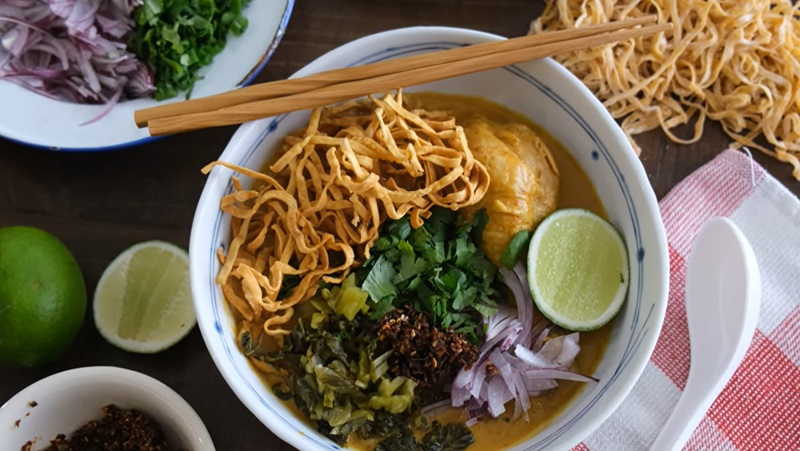
Khao soi, a beloved Thai noodle dish originating from northern Thailand, is a delightful and flavorful curry noodle soup. This comforting dish features egg noodles, tender meat slices (such as chicken or beef), and a fragrant curry broth. The broth is crafted with a blend of aromatic spices, including turmeric, coriander, and chili, and then simmered with coconut milk to create a creamy and slightly sweet base. The noodles are cooked separately and combined with the meat in the broth. What makes khao soi truly special are the accompanying toppings, which include crispy fried noodles, pickled mustard greens, shallots, lime wedges, and cilantro. These toppings provide a delightful contrast of textures and a burst of freshness. Khao soi is a harmonious fusion of flavors and textures that will surely satisfy and comfort anyone seeking to experience the diverse and delicious world of Thai cuisine.
Sai Ua
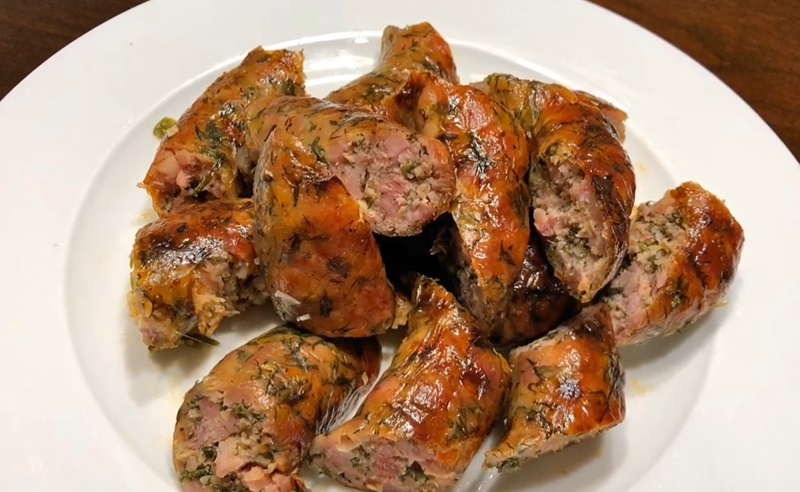
Sai ua, also called Chiang Mai sausage, is a well-liked Thai dish with origins in the northern region of Thailand. This tasty sausage is made from ground pork and a delightful blend of lemongrass, galangal, kaffir lime leaves, shallots, garlic, and different chili peppers. These ingredients give the sausage its distinctive flavor, combining spicy, tangy, and herbal elements. After stuffing the mixture into sausage casings, it is grilled or fried until it obtains a light char and is fully cooked. Sai ua can be enjoyed on its own, accompanied by sticky rice and fresh veggies, or used as a flavorful addition to Thai salads or stir-fries.
Nam Ngiao
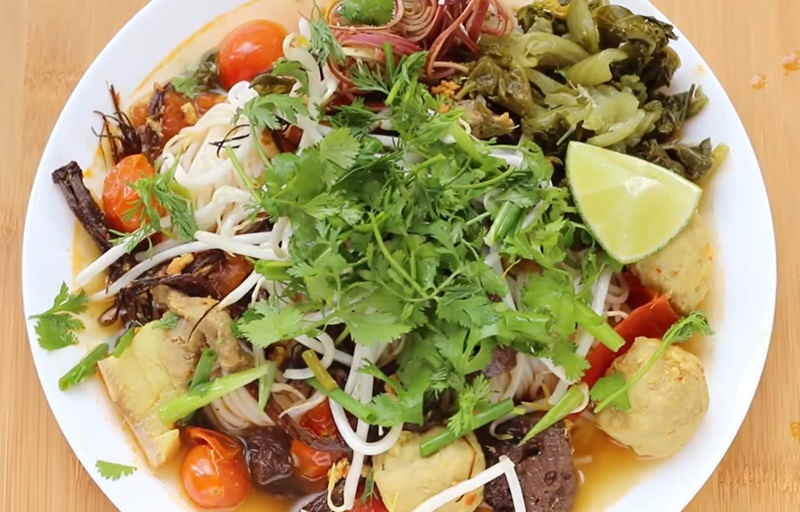
Nam ngiao is a traditional Thai noodle dish hailing from the northern region of Thailand. This aromatic and flavorful soup features a rich and spicy broth, tender rice noodles, and a variety of ingredients that bring texture and depth to the dish. The star of the show is the broth, which is made by simmering pork bones, pork blood cubes, and dried chilies for hours. This creates a complex and deeply satisfying flavor that is both spicy and savory. The broth is then combined with freshly cooked rice noodles, tender pork slices, and an assortment of vegetables like bean sprouts, green onions, and cilantro. For an extra burst of flavor, nam ngiao is often topped with crispy fried garlic and shallots, as well as a drizzle of spicy chili oil. The combination of the rich broth, tender noodles, and crunchy garnishes creates a delightful balance of flavors and textures that is both comforting and satisfying. This popular street food dish in Thailand is a must-try for anyone seeking to indulge in the bold and vibrant flavors of Thai cuisine.
Kaeng Hang Le
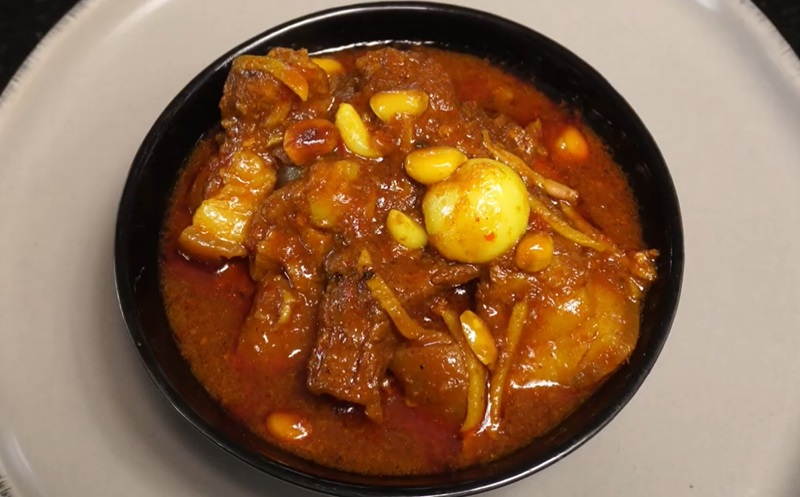
Kaeng hang le is a traditional curry from Northern Thailand that brings together the delicious flavors of pork belly, curry paste, and a variety of aromatic spices. The dish is prepared slowly, allowing the flavors to meld together and permeate the tender pork, resulting in a delightful taste. The star ingredient in kaeng hang le is the curry paste, made from a combination of dried red chilies, shallots, garlic, ginger, and a medley of fragrant spices like cinnamon, cloves, and cardamom. Adding the pork belly to the curry paste creates a thick and sumptuous sauce that is both spicy and savory. To balance the richness of the curry, kaeng hang le often incorporates elements like tamarind paste, palm sugar, and pickled garlic, which contribute a tangy and slightly sweet flavor. The dish is typically garnished with fresh herbs such as cilantro and served alongside steamed jasmine rice.
Nam Phrik Num
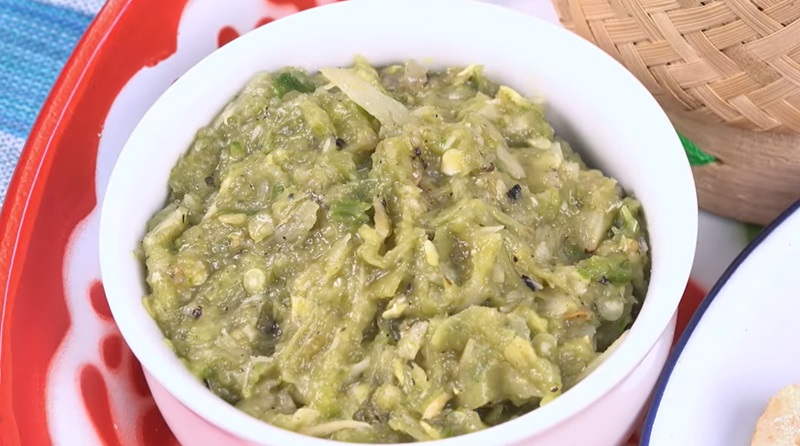
Nam Phrik Num is a traditional Thai condiment renowned for its vibrant flavor and versatility. This spicy chili paste is crafted from a blend of roasted green chilies, garlic, shallots, and aromatic herbs, creating a complex and fiery taste profile. Commonly served alongside main dishes, Nam Phrik Num adds a zesty kick to meals, acting as a dip for fresh or boiled vegetables, sticky rice, or crispy pork crackling. Its bold and tangy notes complement a wide range of dishes, enhancing their taste and providing a satisfying contrast of textures. Whether used sparingly as a condiment or generously as a dip, Nam Phrik Num delights the palate with its intense flavor and adds an authentic Thai touch to any culinary experience. As a beloved staple of Thai cuisine, this versatile chili paste embodies the rich culinary heritage and vibrant flavors of the region, making it a must-try for food enthusiasts seeking an authentic taste of Thailand.
Kaeng Khae
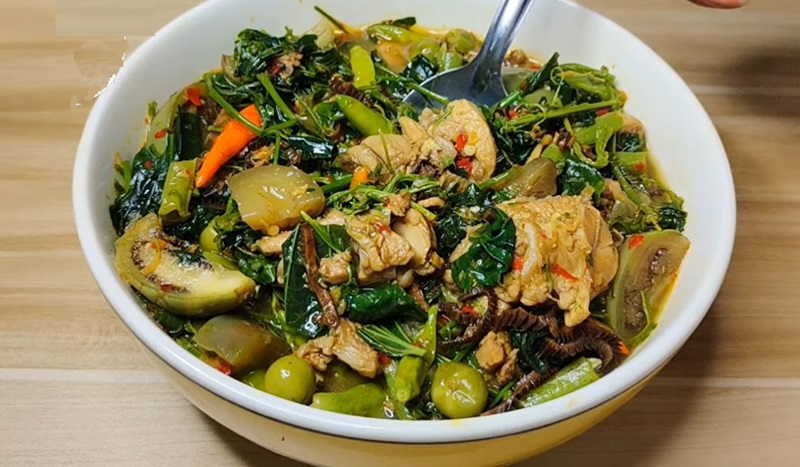
Kaeng khae is a signature curry dish hailing from northern Thailand, celebrated for its aromatic flavors and distinctive ingredients. Named after the Piper sarmentosum leaves, locally known as phak khae, this curry boasts a rich and complex taste profile. The curry base typically includes a medley of fresh herbs and spices such as lemongrass, galangal, and kaffir lime leaves, lending it a vibrant and fragrant aroma. Alongside the pungent flavors of the Piper sarmentosum leaves, other common ingredients in Kaeng khae include vegetables like pumpkin, eggplant, and bamboo shoots, as well as protein sources such as chicken or pork. The result is a hearty and nutritious curry that tantalizes the taste buds with its blend of savory, spicy, and herbal notes. Often enjoyed with steamed rice, Kaeng khae is a beloved dish in northern Thai cuisine, cherished for its unique flavors and cultural significance in the region.
Nam Phrik Ong
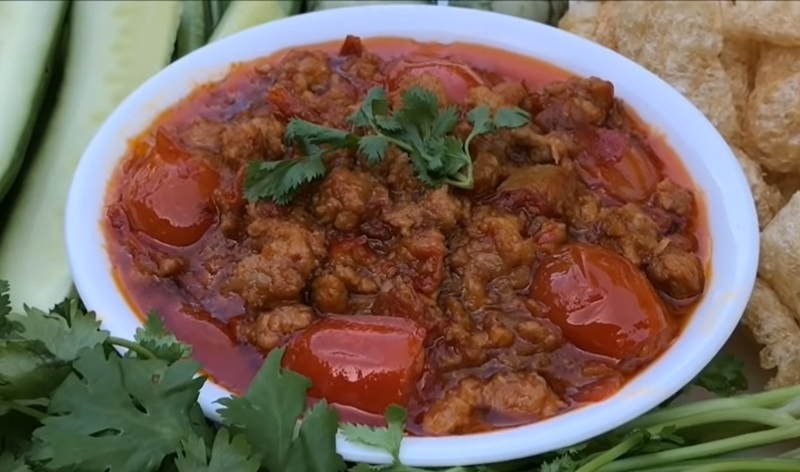
Nam phrik ong is a beloved dish originating from Northern Thailand, celebrated for its rich flavors and vibrant colors. This spicy chili paste is typically made from a blend of minced pork, tomatoes, shallots, garlic, and dried chilies, creating a savory and aromatic condiment. Served alongside sticky rice and an array of fresh vegetables like cucumber, lentils, and Chinese cabbage, nam phrik ong offers a delightful balance of textures and tastes. The hearty combination of protein-rich pork and tangy tomatoes, coupled with the fiery kick of Thai chilies, makes this dish a favorite among locals and visitors alike. Whether enjoyed as a dip, spread, or accompaniment to other dishes, nam phrik ong adds depth and complexity to any meal. With its bold flavors and versatile nature, it's no wonder that nam phrik ong holds a special place in Northern Thai cuisine, embodying the region's culinary heritage and cultural traditions.
Khao Kan Chin
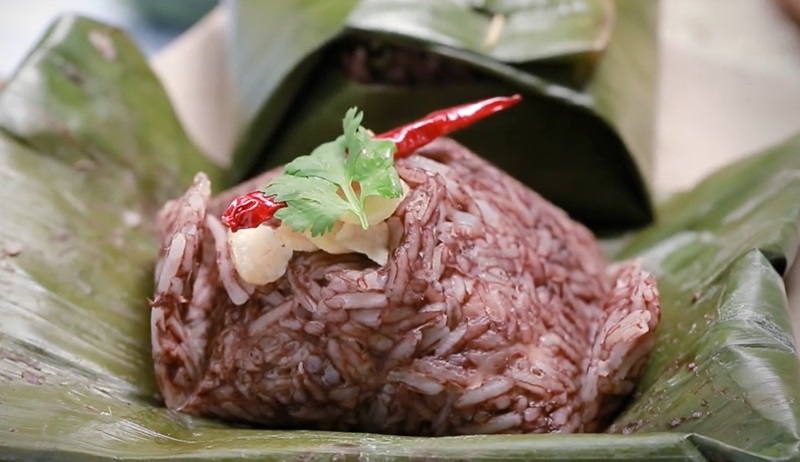
Khao kan chin, a traditional dish hailing from Northern Thailand, is a flavorful steamed pudding made with rice, minced pork, and pork blood. This unique combination is seasoned with a blend of salt, sugar, garlic, shallots, and vegetable oil, creating a savory and aromatic mixture. Encased in a banana leaf and steamed to perfection, khao kan chin boasts a rich and hearty texture, with the earthy notes of rice complementing the savory pork filling.
To enhance its taste and add a spicy kick, the dish is often garnished with fried chopped garlic and dried bird chilies, lending a crunchy texture and fiery flavor. Served alongside refreshing cucumber slices, khao kan chin offers a satisfying balance of flavors and textures, making it a beloved staple in Northern Thai cuisine. With its comforting warmth and complex flavors, this steamed pudding with rice encapsulates the culinary traditions and cultural heritage of the region, inviting diners to indulge in a truly authentic Thai dining experience.


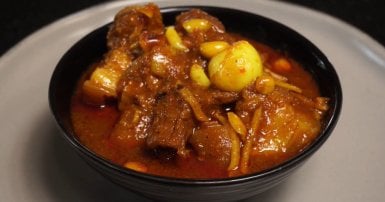
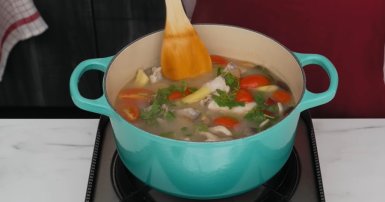
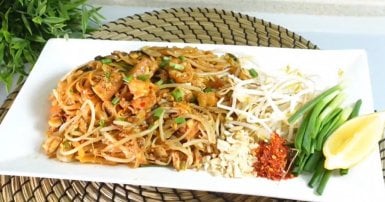
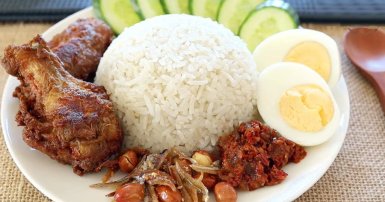

-1709813013.jpg)


